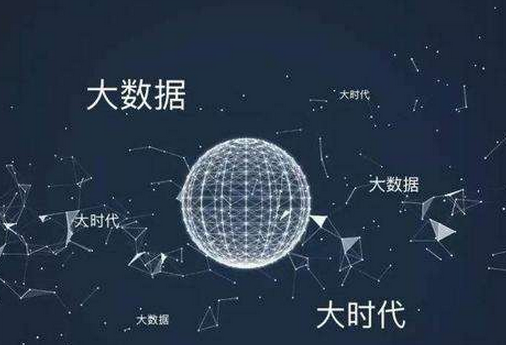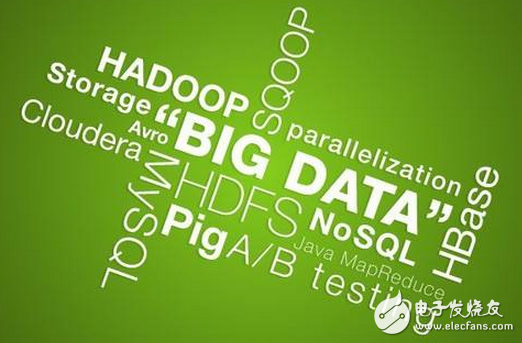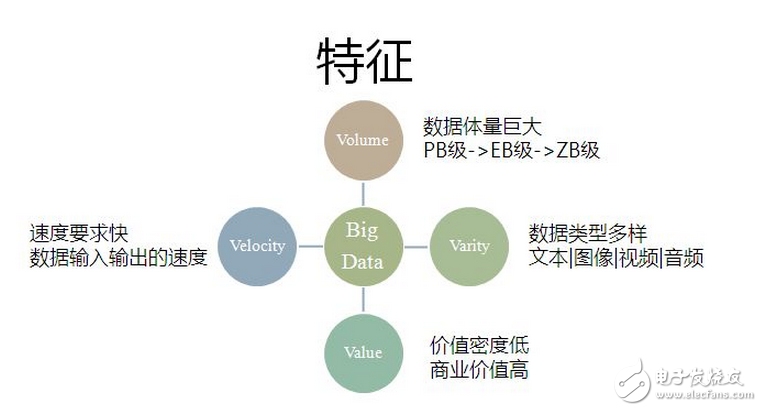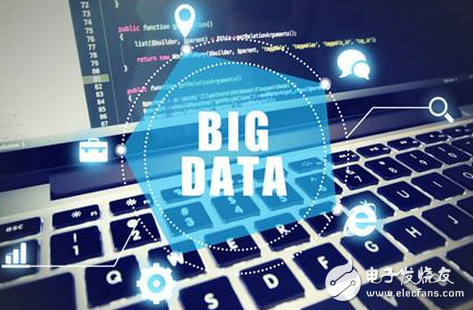Big data research expert Victor Meyer-Schoenberg once said: The essence of the world is data. In his view, the world was originally a data era before knowing big data; after knowing big data, the world is inevitably divided into a big data era and a small data era.
With the continuous development of society, all kinds of data continue to accumulate. If all kinds of analysis and research in the era of small data rely more on sample collection, now, regardless of the data dimension or level, the accumulation of data volume It has reached a very solid stage.
In the transition of these two eras, people naturally change from the previous sample thinking to the overall thinking that the big data era needs to have in order to make better use of big data. In other words, sampling surveys will become the past tense, and all data Analysis and processing is the way of thinking that should be in the era of big data.

For the specific definition and value of big data, most people stay at the stage of knowing it but not knowing why.
But this does not hinder the height of the term big data in the minds of the public. It represents advanced, high-tech, and unpredictable but foreseeable future world.
McKinsey first proposed the arrival of the era of big data: "Data has penetrated into every industry and business function area today and has become an important production factor. People's mining and application of massive data indicates a new wave of productivity growth and consumers. The arrival of the surplus wave."
For the definition of big data, authorities have given different expressions:
The world-renowned consulting firm Gartner defines it as: “Big Data†requires new processing models to have stronger decision-making power, insight and discovery, and process optimization capabilities to adapt to massive, high-growth, and diversified information assets.
The definition given by the McKinsey Global Institute is: a large-scale data collection that greatly exceeds the capabilities of traditional database software tools in terms of acquisition, storage, management, and analysis, with massive data scale, rapid data circulation, and diverse Four characteristics of low data type and low value density.
Others state it this way. Big data refers to "massive and complex data collections that cannot be extracted, stored, searched, shared, analyzed, and processed with existing software tools."
Whether it is information assets or data collections, these definitions all show the value of big data to people's future society.

Big Data refers to "massive and complex data collections that cannot be extracted, stored, searched, shared, analyzed, and processed with existing software tools." The industry usually uses 4 Vs (ie Volume, Variety, Value, Velocity) to summarize the characteristics of big data.
Volume, the data volume is huge. If you consider the storage capacity alone, start with the smallest data storage unit bit and go up in order Byte, KB, MB, GB, TB, PB, EB... Then up to now, the data of all printed materials produced by humans The amount can reach hundreds of petabytes, and the amount of data recorded in the history of all the words that humans have said should be measured in EB. Up to now, the data volume of all printed materials produced by humans is 200PB, while the data volume of all the words that all humans have said in history is about 5EB (1EB=210PB).
Variety, there are many types of data. The diversity of types allows data to be divided into structured data and unstructured data. Compared with the text-based structured data that is easy to store in the past, there are more and more unstructured data, including web logs, audio, video, pictures, geographic location information, etc. The processing capabilities of these multiple types of data are proposed Higher requirements.
Value, low value density. The value density is inversely proportional to the total amount of data. The larger the total amount of data, the more invalid and redundant data. How to quickly complete the value "purification" of data through powerful machine algorithms is a problem that needs to be solved urgently in the context of big data.
Velocity, processing speed is fast. This is the most significant feature that distinguishes big data from traditional data mining. According to the IDC "Digital Universe" report, it is estimated that by 2020, the global data usage will reach 35.2ZB. In the face of such a large amount of data, the efficiency of data processing is the life of an enterprise.

Traditional enterprise data (Traditional enterprise data): Including consumer data of CRM systems, traditional ERP data, inventory data, and accounting data.
Machine-generated /sensor data: including Call Detail Records, smart meters, industrial equipment sensors, equipment logs (usually Digital exhaust), transaction data, etc.
Social data: including user behavior records, feedback data, etc. Social media platforms such as Twitter and Facebook.

It is a kind of electric energy or signal transmission device, which is usually composed of several wires or groups of wires.
Power cord plug is also called power plug. It is used in various fields and countries. Power plug can be roughly divided into conversion power plug, injection power plug and assembly power plug. The general power plug can be used only by connecting the power cord. According to the different purposes of the power plug, the power cord plug can be used at the voltage of 250V, 125V and 36V. According to the different current, it can be used in 16a, 13a, 10a, 5A, 2.5A.
AC-DC Power Cord
ShenZhen Antenk Electronics Co,Ltd , https://www.antenkelec.com